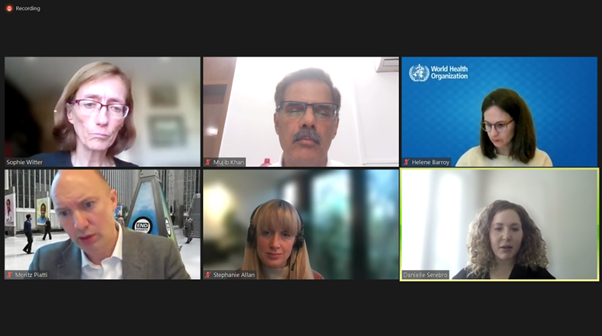
In this blog, we share key lessons on a crucial but neglected topic – how to get PFM systems ready for the next crisis.
Disasters have the potential to severely disrupt public finances through additional expenditure demands, constrained revenues, weakened growth prospects, and higher borrowing requirements. In response to COVID-19, governments across sub-Saharan Africa saw revenues decline by 10-15 percent in 2020, while additional COVID-19 expenditures across the continent exceeded US$60bn.[1]
Resilience is consequently a critical concern for ministries of finance. Strong PFM systems are key for mitigating and managing crises, however they have been repeatedly observed to be inadequate. Rigid spending controls, unsuitable procurement processes, underdeveloped expenditure tracking tools and weak intergovernmental fiscal relations are some of PFM bottlenecks to resilience highlighted in a recent policy brief on Resilient public financial management: emerging practice and implications for the health sector. The brief, from which this blog draws heavily, captures reflections made by the ReBUILD for Resilience Consortium, CABRI, Building Resilience in Ethiopia, Oxford Policy Management, the World Health Organization and World Bank during a webinar in November 2022.
Throughout the PFM cycle, there are opportunities to adapt or alter existing processes to increase disaster responsiveness and resilience. This may happen at the onset of a crisis, in a reactive fashion, or by proactively building in resilience during normal times.
Building disaster risk into budget formulation processes
Quantifying disaster-related fiscal risks. At the start of the budget process, when a ministry of finance projects aggregate revenues and determines expenditure ceilings, quantifying disaster-related fiscal risks can help government better understand the potential fiscal cost of disasters and make provision for them. In Ethiopia, the Ministry of Finance has expanded its fiscal risk registry to include risks from drought, flood, locust infestations and epidemics.[2]
Contingency reserves. Budget contingencies (such as reserve funds or general contingency budgets) can be a useful instrument for meeting disaster-related expenditures. Research from CABRI’s COVID-19 Africa Public Finance Response Monitor found that most African countries did not have domestic contingency reserves in place to respond to the pandemic, and where they did, they were not adequately funded. Fiscal space constraints, and opportunity costs associated with holding funds in a reserve where they could lie idle, are the primary reasons why disaster reserves remain rare, despite the growing frequency of disasters. Using contingencies for funding more frequent and less severe risks is one strategy for limiting the potential opportunity costs.
Building disaster risk into budget execution processes
Emergency procurement. Emergency procurement procedures speed up budget execution during a disaster, however performance is patchy. CABRI research showed that in line with global trends, African governments' emergency procurement efforts were neither satisfactorily efficient nor fully accountable.[3] Several countries had no emergency procurement provisions, and where they did exist, they were not comprehensive or were outdated, necessitating governments to issue additional deviation notices. Comprehensive and feasible emergency procurement regulations, e-Procurement systems, improved procurement planning and coordination among procuring entities would increase the likelihood that lifesaving goods are procured and distributed in a timely and accountable way.
Budget reallocations. Budget reallocations are a common tool to respond to unforeseen expenditure demands following a disaster. CABRI’s review of 50 African countries found that 36 produced a supplementary budget in response to the COVID-19 crisis. Despite their widespread use, supplementary budget procedures are often less transparent and participatory and pose a significant cost in returns foregone from cancelled or postponed expenditure. Research by the Centre for Disaster Protection shows that institutionalising ex-ante processes for when and how budget reallocations must take place can reduce the time required for such reallocations and decrease these opportunity costs. This would involve identifying spending items that are unviable, are underspending, or are of low priority, developing a framework for decisions on underspending for use ex-post disaster, and clearly setting out the policies and processes to be followed in undertaking budget reallocations.[4]
Building disaster risk into reporting and monitoring processes
Expenditure tracking and transparency. Governments in Africa published little information on actual vs planned spending on COVID-19.[5] Government accounting structures are not always set up to track emergency expenditure. Changing this accounting structure is a slow and difficult process. A more straightforward approach adopted by some governments has been to adjust their financial management information systems (FMIS) in innovative ways to track emergency expenditure, while maintaining the existing accounting coding structures. For example, in Ethiopia, a budget tagging system in the FMIS flags spending on the whole disaster cycle (risk reduction, preparedness, response and recovery). During COVID-19, Benin’s FMIS was modified to track in-kind donations related to the pandemic, and Togo’s FMIS tracks cash transfer payments, reducing the risk of fraud or delays.
Participation and accountability. During COVID-19, citizen participation in budget formulation was mostly non-existent or too time-constrained to be meaningful. Parliamentary oversight of spending also suffered, with MPs given less time and information to scrutinise spending plans or they were bypassed entirely. However, several parliaments adopted “agile” practices. The South African Parliament deploy a hybrid plenary system in five days. Supreme audit institutions have been effective in bringing corruption to light and some conducted expedited/real-time audits. Mauritius, South Africa and Sierra Leone published audits for COVID-19 funds before the end of 2020. In the latter’s case, this built on experience from the Ebola crisis.
Important findings have emerged for strengthening the responsiveness and resilience of PFM systems to disasters. The dust may have settled on the COVID-19 pandemic. However, we must continue to document and disseminate lessons on what worked and what didn’t during this crisis, so that policymakers globally can leverage past crises in readying their PFM systems for future crises.
[1] CABRI, 2021. COVID-19 Public Finance Response Monitor series.
[2] Centre for Disaster Protection, 2023. Opportunity Cost of COVID-19 Budget Reallocations: Ethiopia
[3] CABRI, 2021. Streamlining public procurement processes during COVID-19: Balancing efficiency and accountability
[4] Centre for Disaster Protection, 2023. Opportunity Cost of Covid-19 Budget Reallocations: Cross-Country Synthesis
[5] IBP, 2021. Managing COVID Funds: The Accountability Gap.